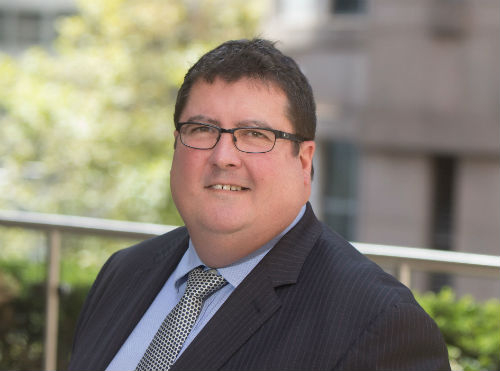

Westpac’s Tony MacRae on broker education, training and customer relationships
Celebrating 200 years in the business in 2017, Westpac knows a thing or two about moving with the times, but even by its usual standards the last 12 months have been exceptionally busy.
Financially, the third party network put in a strong performance. Currently, 46% of the bank’s new lending derives from the channel, creating what group GM of third party distribution Tony MacRae describes as “a positive growth story and a very solid profitability and revenue story.”
Other headline grabbers include the launch of a new content portal designed to support the ongoing training and development of Westpac’s 17,500-strong network of accredited brokers. A first in the broker space, it comprises Ideas Hub for Westpac and Learning Lab for St. George, BankSA and Bank of Melbourne.
Initially designed to equip brokers with essential tips for navigating best practice processes, as with everything Westpac currently engages in there is an added dimension based on the intangible factors so often ignored. Today the strategy is to read between the lines in order to boost the bottom line, and it is here that Westpac is truly embracing change.
It applies to everything from broker training to developing a greater understanding of customer requirements and objectives. In the former it has seen the transformation of online learning into a platform that allows brokers to hear from some of the leading thinkers in the marketplace, through articles, webinars and video content.
In the latter, it has inspired the addition of bespoke questions in the online loan application process. Generated by smart algorithms, they prompt customers to share additional details about their lifestyle and income to match a suitable product. The philosophy is that the better the broker knows a customer, the better the customer outcome.
“We really take the time to understand what the customer is trying to achieve and therefore put them in the right outcome. It isn’t about driving to pure targets; it is really is about understanding objectives and needs and then determining the right product to meet those in the best possible manner,” MacRae says.
While these advancements respond to the recommendations put forth in recent reports and inquiries, to date Westpac is the only bank embracing them in this way.
The interactive questionnaire supports compliance with such recent developments as comprehensive credit reporting, APRA’s revised lending criteria, explains and recommendations from the Combined Industry Forum, to name a few. Further, in February Westpac tightened its credit assessment policy and approval process. In short, it all boils down to responsible lending, which Westpac has taken a “leadership position” on.
“We obviously need to meet our regulatory obligations, and we are in great shape to do that, which puts us in a position where, when we do understand those needs and requirements, we can pick the best possible outcome for the customer,” says MacRae.
Rewriting the rules
MacRae is an architect of the concept of customer outcomes, having developed the first official definition with Gerald Foley during the CIF.
“To me they’re great words; when you put them into action I think the key is really ensuring that we deliver and stretch ourselves on our responsible lending standards and processes,” he says.
The equally important flip side is devising mechanisms for when that cannot be achieved. Not only can this help the customer through a worst-case scenario but it underpins the concept of self-regulation.
MacRae makes two key observations on how this should play out, with a focus on maintaining transparency and reaching amicable conclusions.
“The first angle is, when a loan goes into arrears in the first 12 months outside of unforeseen life events, there needs to be some form of penalty or clawback on the broker. That clawback should go to the customer to assist them in correcting their position, as opposed to going to the lender.”
He adds, “The second piece is in linking trail outcomes to ensuring good customer outcomes is not just at the point of sale but ongoing, and we see this in the form of something like an annual review, documented.”
Although happy to share his insight, MacRae isn’t about to prescribe solutions to the industry. Deliberately avoiding the addition of what he terms as “layer upon layer of complexity upon complexity” during the CIF, the aim now is simply for brokers to extract the data necessary to make informed choices as easily and efficiently as possible.
While the wider industry is free to interpret and implement that as it chooses, Westpac’s new approach to the application questionnaire provides a timely example of striking a balance. Its next step is to introduce “a more granular set of expense categories” to help prompt customers on the information that is so easily overlooked.
Noting the relevance of comprehensive credit reporting, MacRae says: “The real answer here is that we need to get better access to greater information and greater sharing of information. With that, we can automate a lot of the process and not have to rely on customers being able to account for where their expenses are.”
.PNG)
To truly understand customers, brokers and their industry peers need data – and not just any kind, but the big kind.
Globally, big data’s value to retail banking is estimated to reach $10bn by 2020, with mining and trend forecasting the most popular methods of analytics.
The information captured can provide insight on spending and saving habits, common expenditures and even debt management. In Australia such details will become crucial to daily operations; elsewhere it is already used for targeted marketing.
However, collecting data is one thing; keeping it safe is quite another. “We think it’s incredibly important that really strict controls and security exist around data, because we don’t want this falling into the wrong hands,” says MacRae.
The banking industry’s primary concerns about data come from a completely different angle in Australia, with tensions raised that non-majors, which account for 20% of lending, are not yet required to comply with CCR.
“The experiences we have observed overseas show that CCR really is at its most credible and rigorous when the data is as accurate as possible, and you need all the data to do this,” MacRae says.
While diligent focus falls on the customer, Westpac hasn’t forgotten its brokers. Forming a critical link in the network, broker and third party channels will draw a large share of the bank’s focus in 2018. The partnership approach will see time invested in Westpac’s business development managers, nurturing them beyond their transactional roles to support closer work with brokers.
For now, the industry is in a strong position, with MacRae crediting the growing momentum that has built over recent years. Free from major turmoil, this leaves the path clear to focus on what really matters.
As MacRae concludes, “We need to remember throughout all of these transactions and all of the various media attention that we help customers into their homes. If there is a customer going through a stressful transaction, brokers have a role to play in helping them. That’s a wonderful position to be in, and you have to take great pride in that."
